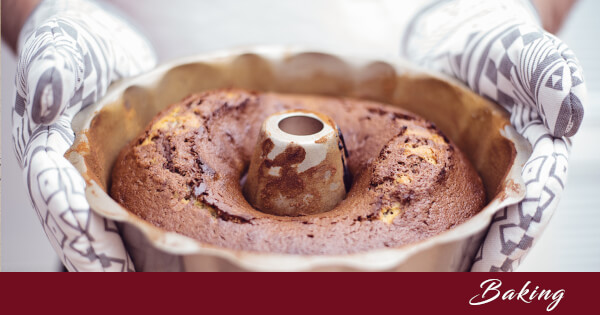What do you get when you combine and boil variations of two basic ingredients: sugar and butter? Answer: A sweet treat and sweeter memories.
The Beginning
Invented in the U.S., this boiled candy’s first confirmed written reference as “taffy” is found in the 1817 Oxford English Dictionary.
Though the ingredients vary with different recipes, the result is the same today as it was two hundred years ago—a sticky substance that can be colored and flavored and turned into a delightful treat by being repeatedly stretched and folded.
Today, the primary ingredients of modern commercial taffy are corn syrup, glycerin, and butter, and the once labor-intensive final step of aerating the candy has been mechanized. This final step is extremely important. The more the candy is worked, the more air that is introduced into the mixture. The more air, the fluffier and lighter the candy will be. With the introduction of machines into this process, the cost to produce taffy dropped, and the amount of candy produced shot up.
Did You Know…
- An 1887 White House cookbook (put together during President Grover Cleveland’s first administration) contains a taffy recipe.
- In 1951, when Topps baseball cards were first introduced, taffy was included in the pack. However, because the cards’ varnish tainted the taffy, Topps soon replaced it with gum.
- Modern manufacturing can produce 1,000 pieces of taffy in one minute.
- The world’s largest piece of taffy weighed over 7,000 pounds. It was created in 1995, in honor of a famous taffy company’s 100th anniversary.
Candy Pulls
Taffy’s popularity increased in the mid-1800s with the introduction of candy pulls. Beginning in the 1840s, these parties were a fun way to make taffy while sharing the labor burden.
The host would prepare the taffy mixture and the guests would repeatedly pull it apart then fold it back together. When the perfect chewy consistency was reached, the taffy was stretched and rolled into long, thin ropes. It was then cut into small pieces and wrapped in wax paper. Guests shared in the work but reaped sweet taffy rewards.
Candy pulls were a fun way to entertain guests or celebrate birthdays. They were held in homes, at colleges, and at churches. They were enjoyed by men, women, young and old. Dressed to the nines or not, people loved socializing while pulling on sticky taffy.
By the 1870s, the American taffy pull had become a true social event. Even into the early 1900s, taffy pulls were a fun way for people to socialize.
Did You Know…
- Candy pulls weren’t called taffy pulls until the 1870s.
- Even the wealthy who lived on New York’s Fifth Avenue enjoyed taffy pulls.
The Name
Few people call taffy candy “taffy.” Most know it as “salt water taffy.” So how did it get its name? There are several theories. One claims a cook’s assistant—either by accident or laziness—used seawater rather than fresh water in the recipe.
A more popular theory claims the name was invented in 1883 when a massive storm flooded a Jersey Shore candy store, soaking the stock of taffy with salty Atlantic seawater. As the store owner cleaned up, a young girl came in and asked if he still had taffy for sale. He told her he had some “saltwater taffy.” Whether he meant it as a joke or a marketing ploy, it worked. She purchased it, and the rest, as they say, is history.
Did You Know…
- Regardless of the name, “salt water taffy” does not contain actual saltwater. There is no difference between it and regular taffy.
- Salt water taffy was most popular during the 1920s. That’s when over 450 companies were making it.
- In 1920, John Edmiston obtained a trademark for the name “salt water taffy.” However, in 1923 the Supreme Court struck down the ruling, saying the term had been around too long and used too frequently to be considered unique.
- Taffy that sold in Atlantic City for 35 cents a pound in 1943, now costs $8.99 a pound.
- Salt water taffy continues to be a popular souvenir for tourists on the Atlantic City boardwalk.
Wrap Up
Taffy is a time-honored culinary treat. It’s been made for over two hundred years, delighting generations of candy fans with both its taste and candy-making process.
Traveling from Tennessee to Texas, I often stopped at Brown’s Country Store and Restaurant in Benton, AR, to pick up taffy for my youngest sister. They had dozens of large barrels throughout the store, each filled with a specific flavor of taffy.
I’ve never made taffy, but if you’re interested in doing so, and maybe holding your own taffy pull, click here for three recipes you can try.
Did You Know…
- More than 100 flavors of taffy are available from various taffy companies, including classic favorites like vanilla, chocolate, and strawberry, and exotic options like mango, passion fruit, maple bacon, and pickle.
- Some of the most popular taffy flavors are watermelon, banana, cinnamon, peppermint, cotton candy, and, in the fall, pumpkin spice.
- Two of the most unusual taffy flavors are jalapeno and cantaloupe.
- May 23 is National Taffy Day in the U.S. This annual celebration was first observed in the mid-1980s.


Loved the taffy story too….reminded me of my childhood days when making homemade candy was a big treat for my older sisters and me
I’ve heard Mom & Dad both talk about doing this when they were kids. I wish I could say the same. Maybe I’ll give it a try now. It’s never too late for candy. Lol
Glad you enjoyed this DYK, Barbara.